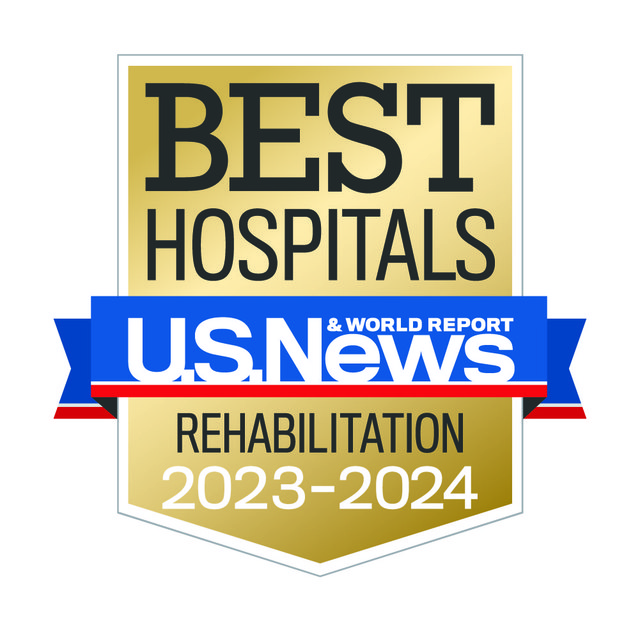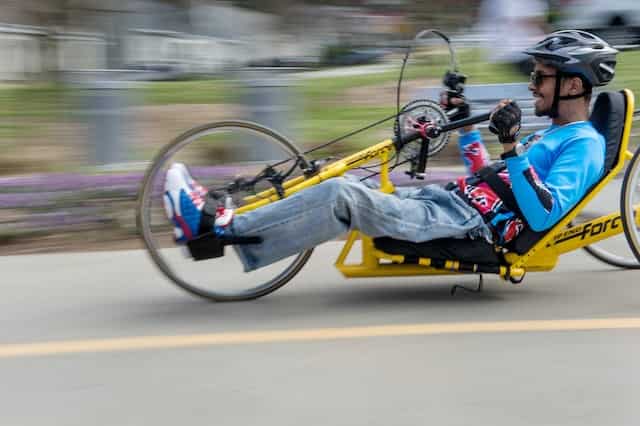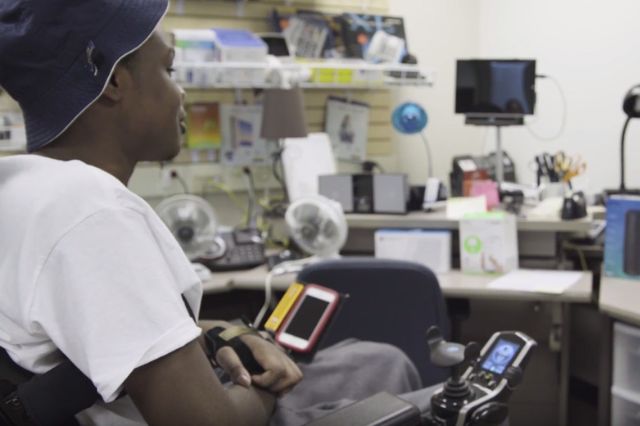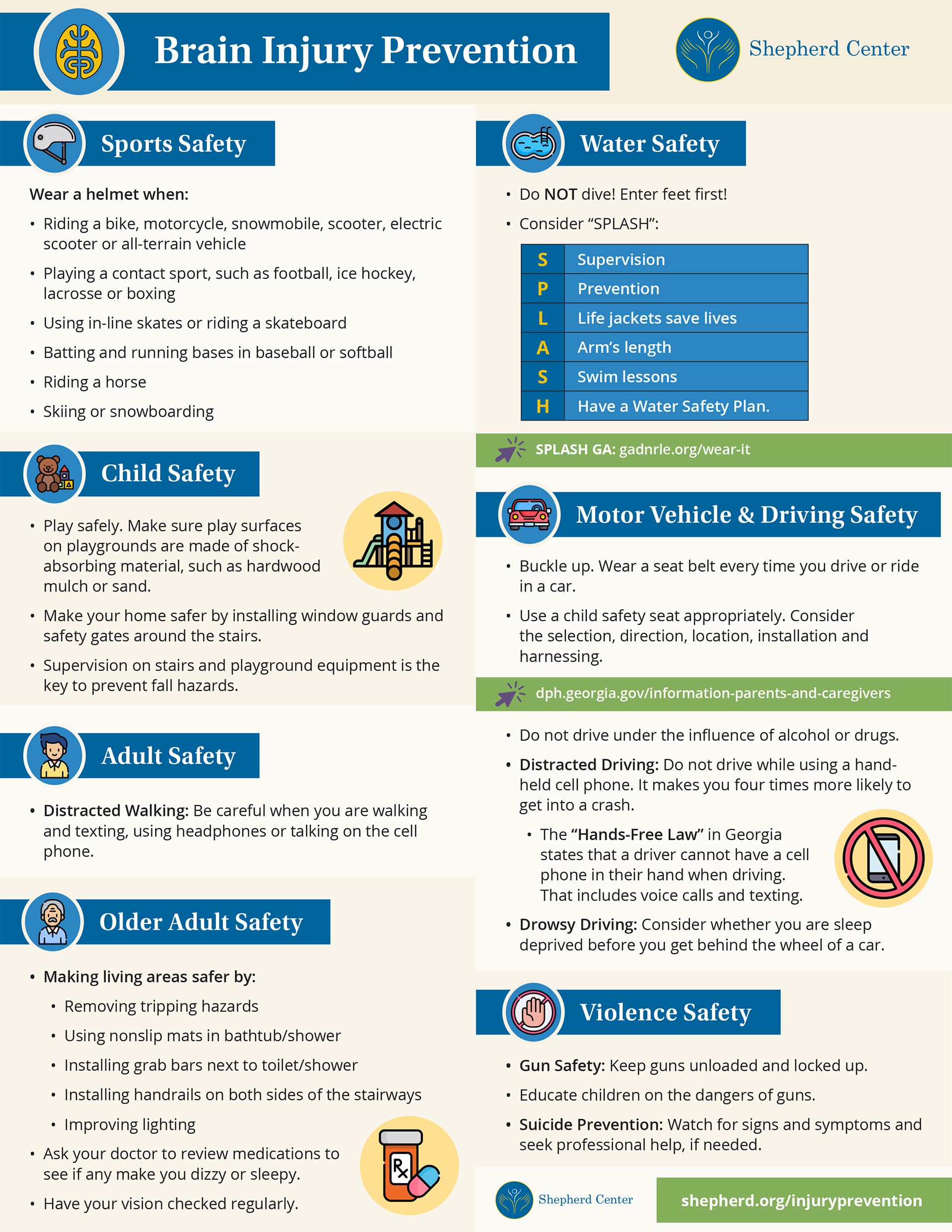TBI Precautions: Tips to Protect Your Brain
How to Prevent Head Injuries
Traumatic brain injuries are a serious public health concern in the United States. Symptoms of brain injury can be mild, moderate or severe, depending on the extent of damage. Even a mild injury can impact how the brain works. Reduce your risk of a traumatic brain injury by following these tips:
Wear your seat belt.
Seat belts are an important TBI precaution because they reduce serious injuries and deaths from crashes by about 50 percent.
- Always wear a seat belt each time you drive or ride in a motor vehicle.
- A child should sit in the back seat of the car and be buckled in with a child safety seat, booster seat or seat belt (according to the child's height, weight and age).
Don’t drive under the influence of drugs or alcohol.
Alcohol and drugs, including prescription medications, can impair a person’s ability to drive. Alcohol-impaired drivers are involved in about one in four crash deaths, resulting in nearly 11,000 deaths in 2018.
Don’t text or use a cell phone while driving.
Cell phones are the number one source of driver distraction. Using a mobile device while driving is similar to having a blood alcohol level at the legal limit of 0.08 , according to researchers at the University of Utah. The NHTSA reports that drivers who talk on cell phones or text while driving are four times as likely to get into a car crash serious enough to injure themselves.
Wear a helmet.
Adults and children should wear a helmet and protective gear when participating in sports and recreational activities. Always wear a helmet when:
- Riding a bike, motorcycle or skateboard
- Skiing, snowboarding or using inline skates
- Playing a contact sport, such as football, ice hockey or boxing
- Playing baseball or softball
Prevent falls at home.
Each year, millions of older adults fall, according to the Centers for Disease Control and Prevention. While one in four people fall, fewer than half tell their doctor. Falls are the most common causes of traumatic brain injury, but they can be prevented in older adults by doing the following:
- Installing handrails in bathrooms and on both sides of a stairway
- Removing tripping hazards, such as throw rugs and clutter
- Improving lighting throughout your home
- Maintaining regular activity for older adults
- Using nonslip mats in the bathtub or shower floor
- Getting regular eye exams
Prevent head injuries in children.
No child is injury proof, but parents and caregivers can take steps to increase precautions against head injury in children. Head injuries can be prevented in children by following these tips:
- Installing window guards to prevent falls out of open windows
- Using safety gates at the top and bottom of stairs
- Keeping stairs clear of clutter
- Using a nonslip mat in the bathtub or shower floor
- Using playgrounds with shock-absorbing materials on the ground
Causes of Brain Injury
Depending on the cause, a brain injury is either traumatic or non-traumatic. Mild brain injury may affect brain cells temporarily, while serious brain injury can be long term. Learn more about the causes of brain injury, including the two main types.





